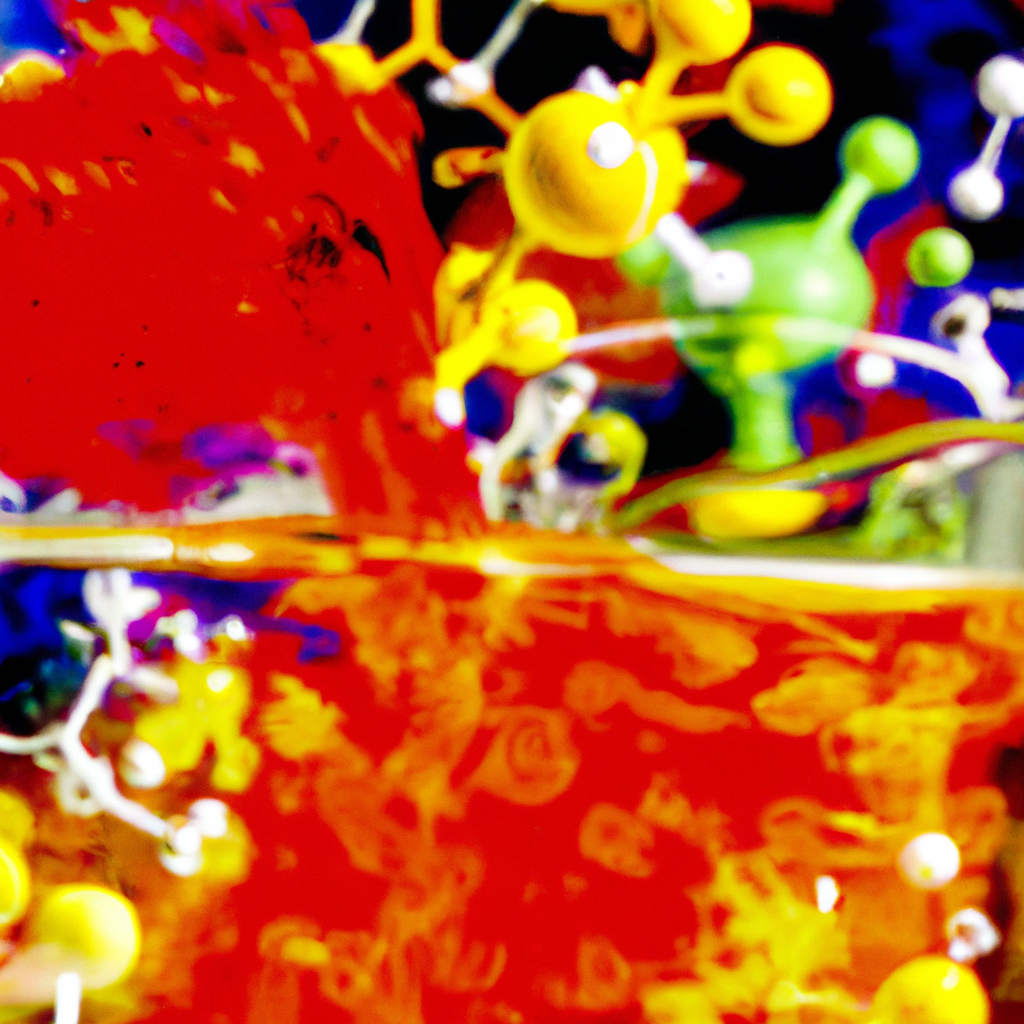In the fascinating world of cancer therapy, one type of treatment that has shown great promise is the use of antimetabolite drugs. These drugs work by interfering with the production of key molecules necessary for the growth and division of cancer cells. By targeting these specific processes, antimetabolite drugs offer a unique approach to tackling cancer. Join us as we delve into the world of antimetabolite drugs and explore their potential in the fight against cancer.
I. Overview of Cancer Therapy
A. Importance of Cancer Therapy in Treatment
Cancer therapy plays a crucial role in the treatment of cancer. It involves various approaches aimed at targeting cancer cells and halting their growth or destroying them altogether. This therapy is essential in combating cancer and improving outcomes for patients. By specifically targeting cancer cells, cancer therapy helps to minimize damage to healthy cells and tissues.
B. Different Treatment Approaches
There are several different approaches to cancer therapy, including surgery, radiation therapy, immunotherapy, targeted therapy, and chemotherapy. Each approach works differently to address the unique characteristics of cancer cells and their behavior in the body.
C. Role of Antimetabolite Drugs
Antimetabolite drugs are a type of chemotherapy drug commonly used in cancer therapy. They work by disrupting the metabolic processes in cancer cells, hindering their ability to grow and reproduce. These drugs specifically target enzymes or molecules that are necessary for cell division and DNA or RNA synthesis. By doing so, antimetabolite drugs are able to impair the ability of cancer cells to proliferate.
II. Antimetabolite Drugs
A. Definition and Mechanism of Action
Antimetabolite drugs are a class of drugs that mimic naturally occurring molecules necessary for cell growth and function. However, these drugs are structurally similar to the molecules they imitate, thus interfering with their normal function. The mechanism of action of antimetabolite drugs involves substituting normal building blocks within the cell, thereby disrupting crucial metabolic pathways and inhibiting cell division and proliferation.
B. Types of Antimetabolite Drugs
There are several types of antimetabolite drugs, each with its own specific chemical structure and target within the cell. Some common types of antimetabolite drugs include antifolates (such as methotrexate), pyrimidine analogs (such as cytarabine), and purine analogs (such as fludarabine).
C. Examples of Antimetabolite Drugs
Methotrexate, fluorouracil (5-FU), and cytarabine (Ara-C) are examples of antimetabolite drugs that are commonly used in cancer therapy. These drugs have been extensively studied and have demonstrated effectiveness in treating various types of cancer, including breast cancer, colon cancer, and leukemia.

III. Effectiveness of Antimetabolite Drugs
A. Clinical Trials and Studies
The effectiveness of antimetabolite drugs has been extensively studied through clinical trials and studies. These trials evaluate the response rates, survival outcomes, and overall efficacy of these drugs in different types of cancer. The results of these trials provide valuable insights into the effectiveness of antimetabolite drugs and guide their use in clinical practice.
B. Success Rates and Response Rates
Antimetabolite drugs have shown varying success rates and response rates depending on the type and stage of cancer being treated. In some cases, these drugs have demonstrated significant tumor regression and improved survival rates. However, it is important to note that individual responses to these drugs may vary, and not all patients will experience the same level of effectiveness.
C. Limitations and Side Effects
Like any other form of cancer therapy, the use of antimetabolite drugs has its limitations and potential side effects. These drugs can affect rapidly dividing cells throughout the body, not just cancer cells, leading to side effects such as bone marrow suppression, gastrointestinal disturbances, and hair loss. Additionally, some cancers may develop resistance to antimetabolite drugs over time, limiting their long-term effectiveness.
IV. Commonly Used Antimetabolite Drugs
A. Methotrexate
Methotrexate is a widely used antimetabolite drug in the treatment of various cancers, including leukemia, lymphoma, and solid tumors. It works by inhibiting the enzyme dihydrofolate reductase, which is involved in DNA synthesis. By blocking this enzyme, methotrexate disrupts the replication of cancer cells and slows down their growth.
B. Fluorouracil (5-FU)
Fluorouracil, commonly known as 5-FU, is another antimetabolite drug frequently used in cancer therapy. It interferes with the synthesis of RNA and DNA, preventing cancer cells from dividing and multiplying. 5-FU is particularly effective in treating colorectal cancer and is often used in combination with other chemotherapy drugs for better outcomes.
C. Cytarabine (Ara-C)
Cytarabine, also known as Ara-C, is primarily used in the treatment of acute myeloid leukemia (AML) and acute lymphoblastic leukemia (ALL). It inhibits DNA synthesis by incorporating itself into the growing DNA chain and inhibiting its further elongation. This disruption in DNA synthesis prevents cancer cells from dividing and leads to their destruction.

V. Combination Therapies with Antimetabolite Drugs
A. Synergistic Effects
Combining antimetabolite drugs with other treatment modalities can enhance their effectiveness. When used in combination, these drugs often exhibit synergistic effects, meaning that their combined action is greater than the sum of their individual effects. This approach allows for increased tumor regression and improved overall response rates.
B. Complementary Treatment Modalities
Antimetabolite drugs can also be combined with other forms of cancer therapy, such as radiation therapy or targeted therapy, to achieve better outcomes. By combining different treatment modalities, healthcare providers can target cancer cells from multiple angles, increasing the chances of success and reducing the risk of relapse.
C. Challenges of Combination Therapy
While combination therapies hold promise in cancer treatment, they also present challenges. The complexity of managing multiple drugs and their potential side effects can be demanding. Additionally, there may be overlapping toxicities between different drugs, requiring careful monitoring and adjustment of dosages to minimize adverse effects.
VI. Current Research and Developments
A. Novel Antimetabolite Drugs
Ongoing research is focused on developing novel antimetabolite drugs that can specifically target cancer cells while minimizing harm to healthy tissues. These drugs aim to improve efficacy, reduce side effects, and overcome resistance observed with some current antimetabolite drugs. By exploring new chemical structures and mechanisms of action, researchers are striving to enhance the effectiveness of cancer therapy.
B. Targeted Approaches
Targeted approaches involve identifying specific molecular targets within cancer cells and designing drugs that selectively act on these targets. This personalized medicine approach holds great potential for improving the effectiveness of antimetabolite drugs. By tailoring treatment to the individual patient and their specific cancer characteristics, targeted therapies can maximize therapeutic benefits while minimizing adverse effects.
C. Immunotherapy with Antimetabolites
Immunotherapy, a rapidly advancing field in cancer therapy, involves enhancing the body’s immune system to recognize and destroy cancer cells. Antimetabolite drugs can be combined with immunotherapeutic agents to enhance the immune response against cancer. This combination approach shows promise in increasing the effectiveness of cancer therapy and improving long-term outcomes for patients.
VII. Future Applications and Potential
A. Personalized Medicine
The future of cancer therapy lies in personalized medicine. By understanding the unique characteristics of each patient’s cancer, healthcare providers can tailor treatment strategies to maximize effectiveness. Antimetabolite drugs, with their ability to disrupt specific metabolic pathways, play a crucial role in this approach. By selecting the most appropriate antimetabolite drug for each patient, personalized medicine holds promise for improved treatment outcomes.
B. Drug Resistance and Overcoming Resistance
Drug resistance is a significant challenge in cancer therapy. Over time, cancer cells can develop mechanisms to evade the effects of antimetabolite drugs, leading to treatment failure. Future research aims to overcome this resistance through the development of novel drugs and combination therapies that target resistance mechanisms directly.
C. Advancements in Drug Delivery Systems
Advancements in drug delivery systems offer opportunities to enhance the effectiveness of antimetabolite drugs. These systems can improve drug distribution, increase drug concentration at the tumor site, and minimize toxic effects on healthy tissues. Targeted drug delivery systems, such as nanoparticles or liposomes, show promise in improving the therapeutic index of antimetabolite drugs.
VIII. Precautions and Guidelines
A. Proper Dosage and Administration
To ensure optimal outcomes and minimize the risk of adverse effects, it is crucial to follow proper dosage and administration guidelines for antimetabolite drugs. Dosages should be tailored to each patient based on factors such as body weight, renal function, and overall health. Adherence to these guidelines is vital for the desired therapeutic effects to be achieved.
B. Monitoring and Follow-up Care
Regular monitoring and follow-up care are essential when using antimetabolite drugs. These drugs can affect blood cell counts, liver function, and kidney function, among other parameters. Healthcare providers need to closely monitor patients for any changes or possible side effects and make adjustments to treatment plans as necessary.
C. Managing Side Effects and Toxicity
Antimetabolite drugs can cause significant side effects, including nausea, vomiting, fatigue, and hair loss. Proper management of these side effects is crucial to ensure patient comfort and quality of life during treatment. Supportive care measures, such as antiemetic medications and nutritional support, can help manage these side effects and minimize their impact on patient well-being.
IX. Conclusion
A. Recap of Antimetabolite Drugs in Cancer Therapy
Antimetabolite drugs play a vital role in cancer therapy by disrupting the metabolic pathways of cancer cells and inhibiting their growth. Methotrexate, fluorouracil, and cytarabine are commonly used antimetabolite drugs that have demonstrated effectiveness across various types of cancer. These drugs, when used alone or in combination with other treatment modalities, exhibit promising results in combating cancer.
B. Promising Potential for Future Treatment
Ongoing research and developments in the field of cancer therapy hold promising potential for the future. Novel antimetabolite drugs, targeted approaches, and immunotherapy with antimetabolites are paving the way for more effective treatments with reduced side effects. Personalized medicine, overcoming drug resistance, and advancements in drug delivery systems further enhance the potential of antimetabolite drugs in cancer therapy.
C. Importance of Further Research
Further research is essential to continue improving the effectiveness of antimetabolite drugs and cancer therapy as a whole. By exploring new avenues and addressing existing challenges, researchers can uncover new insights and advancements that will benefit patients and contribute to the ongoing fight against cancer. Continued investment in research and development is crucial to harness the full potential of antimetabolite drugs and ultimately improve patient outcomes.






